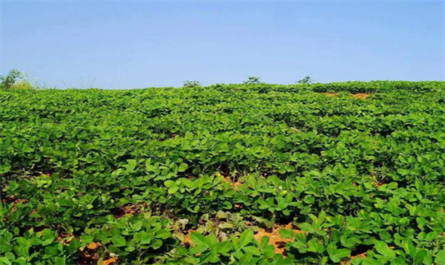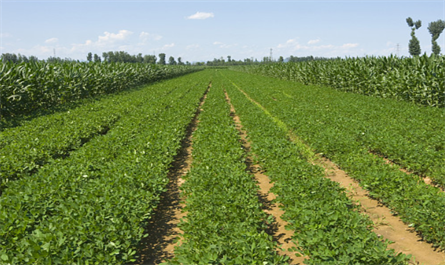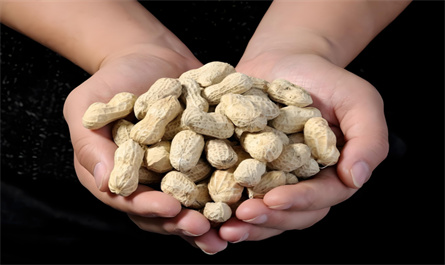Recommended plant growth regulators for peanut germination
I. Main types and functions of plant growth regulators for peanut germination

During the germination of peanuts, plant growth regulators can break seed dormancy and accelerate radicle germination by regulating endogenous hormone levels. Commonly used regulators include:
1. Gibberellic Acid (GA₃):
Promotes cell elongation and improves germination potential. The recommended concentration is 50-100 mg/L, and the germination rate can be increased by 15%-20% after soaking for 6-8 hours.
2. 1-Naphthyl Acetic Acid (NAA):
Stimulates root differentiation. It is recommended to use 10-20 mg/L solution to soak seeds, and the radicle length can increase by 30%-40%, but too high a concentration will inhibit the growth of the bud sheath.
3. Sodium Nitrophenolates (Atonik):
A composite regulator that has both germination promotion and stress resistance. Soaking seeds at 0.3-0.5 mg/L for 12 hours can improve the uniformity of germination by more than 25%.

II. Key technical points for the use of plant growth regulators
1. Accurate concentration control: Excessive use can easily lead to deformed seedlings. For example, Gibberellic Acid concentration exceeding 200 mg/L may inhibit embryo growth.
2. Co-treatment scheme:
- The combination of Gibberellic Acid + 6-BA (5 mg/L) can promote the development of buds and roots simultaneously;
- It is recommended to add 0.1% calcium chloride in low temperature environments to enhance the ability to resist cold damage.
3. Environmental adaptability:
- It is recommended to use 25℃ constant temperature for germination of spring-sown peanuts;
- The soaking time for summer sowing needs to be shortened to 4-6 hours to avoid high temperature and high humidity causing seed rot.

III. Precautions and alternatives
1. Alginate or humic acid can be used to replace chemical regulators in organic planting, but the effect is slower (soaking seeds needs to be extended to 24 hours).
2. After treatment, the seeds need to be rinsed with clean water 2-3 times. Residual regulators may inhibit seedling emergence.
3. For old seeds, osmotic regulators (such as PEG-6000) should be used first, and the concentration should be controlled at 5%-10%.

During the germination of peanuts, plant growth regulators can break seed dormancy and accelerate radicle germination by regulating endogenous hormone levels. Commonly used regulators include:
1. Gibberellic Acid (GA₃):
Promotes cell elongation and improves germination potential. The recommended concentration is 50-100 mg/L, and the germination rate can be increased by 15%-20% after soaking for 6-8 hours.
2. 1-Naphthyl Acetic Acid (NAA):
Stimulates root differentiation. It is recommended to use 10-20 mg/L solution to soak seeds, and the radicle length can increase by 30%-40%, but too high a concentration will inhibit the growth of the bud sheath.
3. Sodium Nitrophenolates (Atonik):
A composite regulator that has both germination promotion and stress resistance. Soaking seeds at 0.3-0.5 mg/L for 12 hours can improve the uniformity of germination by more than 25%.

II. Key technical points for the use of plant growth regulators
1. Accurate concentration control: Excessive use can easily lead to deformed seedlings. For example, Gibberellic Acid concentration exceeding 200 mg/L may inhibit embryo growth.
2. Co-treatment scheme:
- The combination of Gibberellic Acid + 6-BA (5 mg/L) can promote the development of buds and roots simultaneously;
- It is recommended to add 0.1% calcium chloride in low temperature environments to enhance the ability to resist cold damage.
3. Environmental adaptability:
- It is recommended to use 25℃ constant temperature for germination of spring-sown peanuts;
- The soaking time for summer sowing needs to be shortened to 4-6 hours to avoid high temperature and high humidity causing seed rot.

III. Precautions and alternatives
1. Alginate or humic acid can be used to replace chemical regulators in organic planting, but the effect is slower (soaking seeds needs to be extended to 24 hours).
2. After treatment, the seeds need to be rinsed with clean water 2-3 times. Residual regulators may inhibit seedling emergence.
3. For old seeds, osmotic regulators (such as PEG-6000) should be used first, and the concentration should be controlled at 5%-10%.



